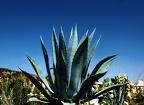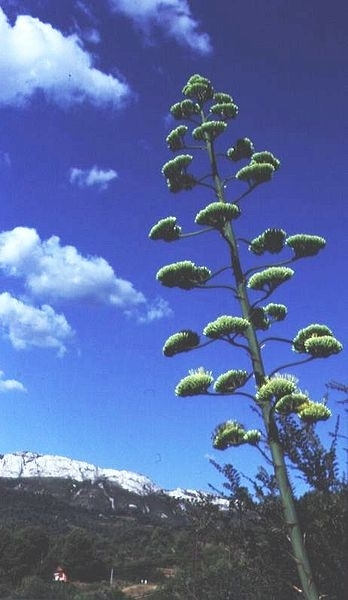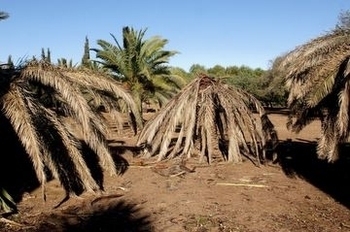

Guidelines for submitting articles to San Javier Today
Hello, and thank you for choosing sanjavier.today to publicise your organisation’s info or event.
San Javier Today is a website set up by Murcia Today specifically for residents of the urbanisation in Southwest Murcia, providing news and information on what’s happening in the local area, which is the largest English-speaking expat area in the Region of Murcia.
When submitting text to be included on San Javier Today, please abide by the following guidelines so we can upload your article as swiftly as possible:
Send an email to editor@spaintodayonline.com or contact@murciatoday.com
Attach the information in a Word Document or Google Doc
Include all relevant points, including:
Who is the organisation running the event?
Where is it happening?
When?
How much does it cost?
Is it necessary to book beforehand, or can people just show up on the day?
…but try not to exceed 300 words
Also attach a photo to illustrate your article, no more than 100kb

Spanish Gardening- Basic propagation techniques, Agave Americana
Costa Cálida Gardening, Propagating Agaves
 These are the simplest plants to both grow or propagate.
These are the simplest plants to both grow or propagate.
Their striking, architectural shapes dominate Spanish hillsides and fincas, grown for their extreme drought tolerance, low maintenance requirements, erosion control properties, and in gardens for their elegance and versatility.
Specimens of the enormous agave Americana, in both variegated or green form are found on banks and road edges all over the Spanish countryside, dense planting creating impenetrable hedges for corralling animals, and minimizing erosion, an everyday, throwaway plant of no value, yet fetch large sums of money in specialist UK nurseries.
Out of interest, we had a little surf through specialist nursery sites, and were shocked to find specimens of these, approximately 90cm high, on offer for 99 pounds each in the UK, and we can have as many as we want for free.
 }Theyre commonly known as the century plant, due to the length of time taken to flower, on average around 28 years, a mature plant can easily reach 2 mtrs wide, the magnificent flower spike soaring up to 8 mtrs in height.
}Theyre commonly known as the century plant, due to the length of time taken to flower, on average around 28 years, a mature plant can easily reach 2 mtrs wide, the magnificent flower spike soaring up to 8 mtrs in height.
After flowering, the plant will die, but by this time it has left a legacy of dozens of offspring, growing in an ever increasing circle around it.
Agaves increase via the production of offsets, which are attached to the plant by, a stolon . Just think of it as a baby being attached by an umbilical cord.
As the young baby develops, it grows leaves and starts to set its own roots, so can survive on its own, at which point it can simply be cut from the parent plant and planted out solo.
The ease of carrying out this process depends on just how large the babies are that you wish to detach.
Its possible to dig up and transplant a large specimen, (probably about 80 quids worth in UK prices!) by using a spade to cut through the join from the parent plant to the offset, although its hard work. To transplant the big ones is a 2 or 3 man job as theyre a lot heavier than they look, so we loosen the soil in a ring around the plant with a fork first, before trying to get some leverage underneath. To make the job easier, cut off the lower leaves so you can get close enough to get a fork in properly, they actually look wonderful when the bottom leaves are cut away and the plant left to grow like a giant pineapple, very chic and Chelsea garden show.
Its far easier to take smaller plants by just sticking a spade through the stolon and digging up the offsets .As long as theres a decent root system, cut the stolen close to the plant, its superfluous.
When lifting a potted plant, youll often find the offsets growing in a circle around the pot.
The photograph here shows an aloe vera, which are propagated in exactly the same way. We just gently unwrap them and cut off - a process that has to be repeated every other year as they become pot-bound, choked with offsets.
Although it sounds wasteful, we only bother potting on an offset with its own root system unless its an unusual plant and we badly want as many as possible, otherwise it takes a lot longer for the young to develop and when its a common plant, its just not worth it, so we bin the long and straggly offsets, or the really young ones without roots, and just pot on the good ones.
Well cover aloe veras properly next month as they can be a bit tetchy when undergoing this process and you need to understand what theyre doing.
Its quite common to see adult agaves with hundreds of young around them, and it wont hurt the plant at all for you to take as many as you want.
If youve transplanted a larger plant and it looks as though its struggling a bit, remove lower or damaged leaves, and it will soon start to put out young. Sometimes if the parent plant dies off youll find it was actually happier than it appeared, and there will be a whole network of growing stolons beneath the soil, heading for the surface.
Weve learnt to just cut off really grotty looking top growth when this happens, and before too long, the young are popping up around the old stump.
These plants look stunning in pots, so if youve got a holiday home and want to leave something virtually indestructible in situe, pot on a few of these, and of course for voluntary scheme areas theyre an absolute must.
Block plant amongst a few rocks for a stunning scheme, or pile up some soil over the top of unwanted rubble and plant these on top , it gives impact height and creates a feature for no money at all.
And with a little time theyll spread and ground cover.
Its interesting to block plant in the different colour ways for impact.
Theres Marginata ,with yellow stripes along the margins of each leaf, Medio-picta with a central white band, Striata with multiple yellow to white stripes along the leaves, and Variegata with white edges on the leaf.
And of course, once settled in, they require virtually no watering.
The only caution we would urge is the understanding that a little plant soon grows into a big plant, so if planting close to pathways or in an area where young children are likely to be playing, remember that the leaf tip is razor sharp and that the leaves have quite nasty spikes running along their edges.
I have a seen a rare specimen called a "rioja corkontipicus"growing locally, so perhaps you might like to watch out for one of those locally to you.
















































